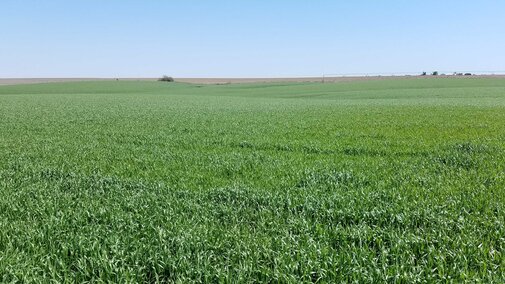Because of the presence of stripe rust and leaf rust in the state, as well as increasing incidence and severity of Septoria leaf blotch and tan spot, growers are encouraged to be vigilant in scouting their fields.
A survey of wheat fields May 4-5 in southwest, south central, and southeast Nebraska found low levels of disease with most fields showing a lush green growth (Figure 1). Leaf rust was found in a few fields at trace levels (Figure 2). Stripe rust was found in the majority of fields visited. It was mostly at trace levels (Figure 3), but occasionally moderate to high severity was found on the lower leaves (Figure 4).
Fungal leaf spot diseases (Septoria leaf blotch and tan spot) were also observed at low levels in most fields. However, in one field severity of these diseases was moderate to high in the mid to upper canopy (Figure 5). Wheat growth stage in the fields surveyed ranged from flag leaf emergence to early heading; most fields were at the flag leaf and boot stages.
In Red Willow County, spotty lodging from the April 29-30 snow storm was evident in some fields as were remnants of the snow (Figure 6). There was some stem breakage from the weight of the snow, but it was limited to where massive amounts of snow accumulated due to drift.
Management
The flag leaf has emerged in most wheat fields. Because of the presence of stripe rust and leaf rust in the state, as well as increasing incidence and severity of Septoria leaf blotch and tan spot, growers are encouraged to be vigilant in scouting their fields. Apply a fungicide to protect the flag leaf based on the presence and level of disease in your field. If there is very little or no disease in the field, it is not necessary to apply a fungicide. However, if you see stripe rust, leaf rust, or fungal leaf spots in several spots in the field and development of these diseases appears to be increasing, consider applying a fungicide to protect the flag leaf. A list of fungicides labeled for disease control in wheat has been compiled by the North Central Regional Committee on Management of Small Grain Diseases (NCERA-184).
Some fields, especially in the Panhandle, have wheat streak mosaic, a virus disease. It is essential to distinguish between symptoms caused by wheat streak mosaic (Figure 7) and those caused by fungal diseases (Figures 2 to 5, Table 1). This is because fungal diseases can be controlled by applying a fungicide whereas wheat streak mosaic or other virus diseases cannot. Do not apply a fungicide to control wheat streak mosaic or in the hope that a fungicide application can reduce the yellowing caused by wheat streak mosaic. If you are not sure about the identity of the disease, consult your local extension office or submit a sample to the Plant and Pest Diagnostic Clinic.
Always read and follow label instructions before and during application of a fungicide. Proper mixing, correct application rate, wheat growth stage timing, and application during optimal weather conditions are critical to achieving the best disease control.
Distinguishing Between Rust Diseases of Wheat
With all three rust diseases reported this growing season in southern states and two in Nebraska, it is important to know how to distinguish between them. Table 1 summarizes the differences between leaf rust, stem rust, and stripe rust. For more information see the NebGuide, Rust Diseases of Wheat (G2180). The main points to note are that all three rusts are blown into our region in the spring from southern states where they overwinter, although they can also overwinter in our region if the fall and winter are mild.
All three rusts are favored by moisture. However, they are preferentially favored by temperature. Stripe rust is favored by cool to moderate temperatures and therefore is usually the first of the three rusts to appear in Nebraska, starting in April. Leaf rust is favored by moderate to warm temperatures and usually appears in Nebraska starting in late May. This year we are seeing it in early May, most likely because of the mild spring temperatures we have had in Nebraska and in the southern states, from where it often originates in spring. Stem rust is favored by warm temperatures. We usually see it in Nebraska starting in June.
Most wheat varieties grown in Nebraska have good resistance to stem rust; therefore, it is not as common as leaf rust. The frequency of occurrence of stripe rust in Nebraska has increased over the last decade, and it has become more frequent, severe, and widespread during the last several years.

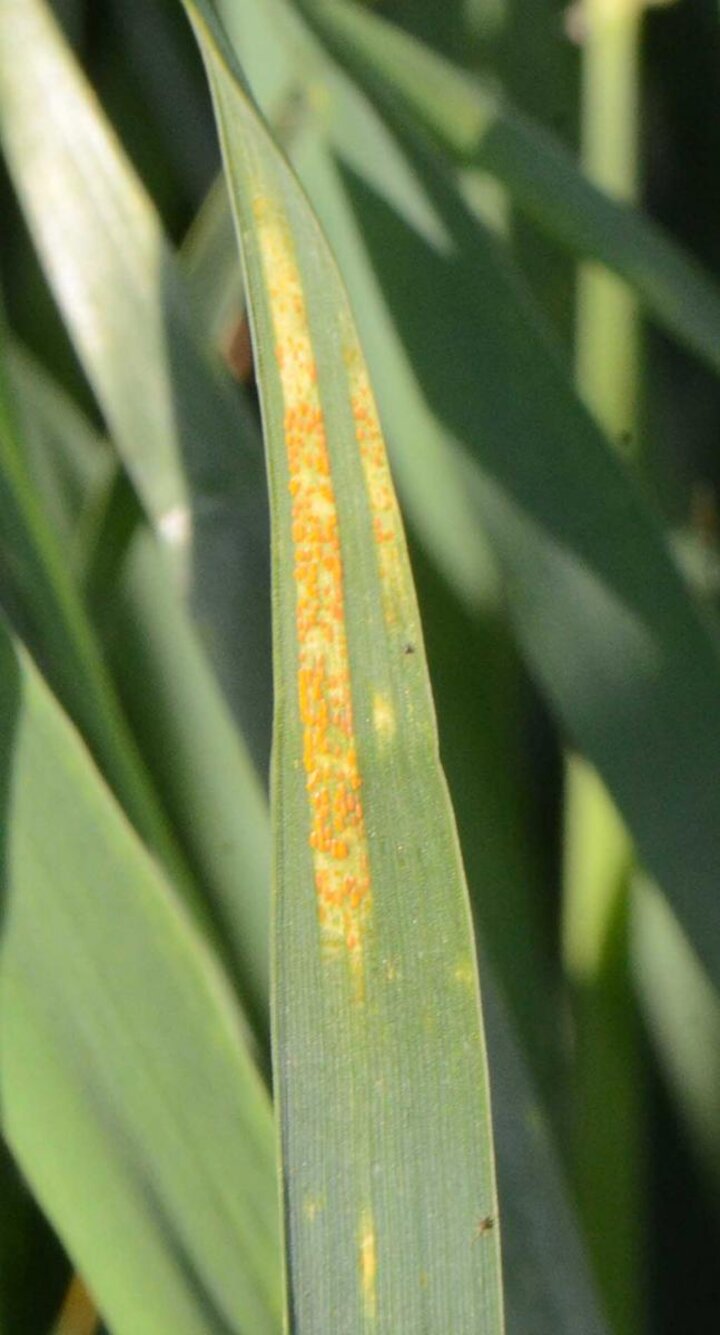
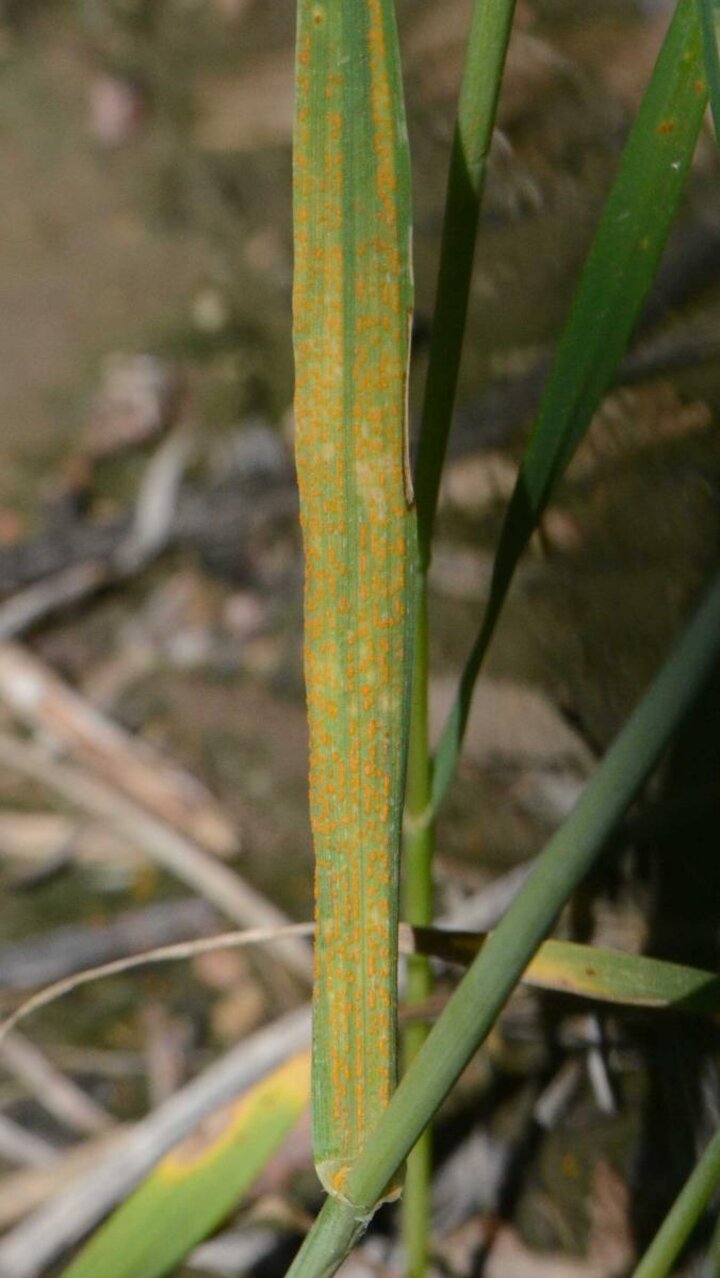
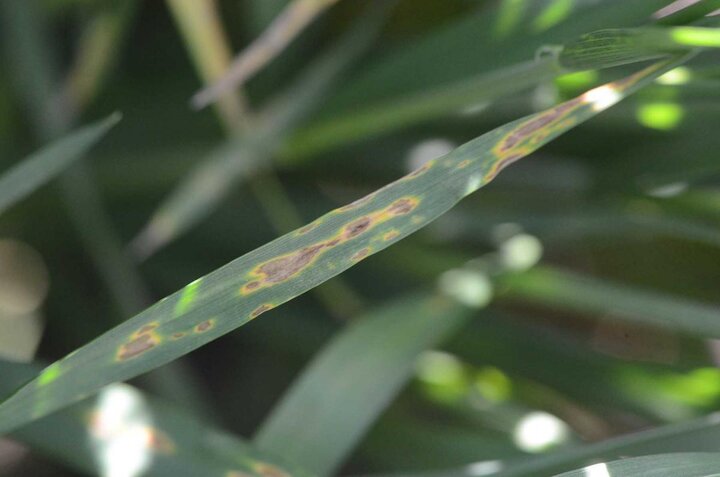

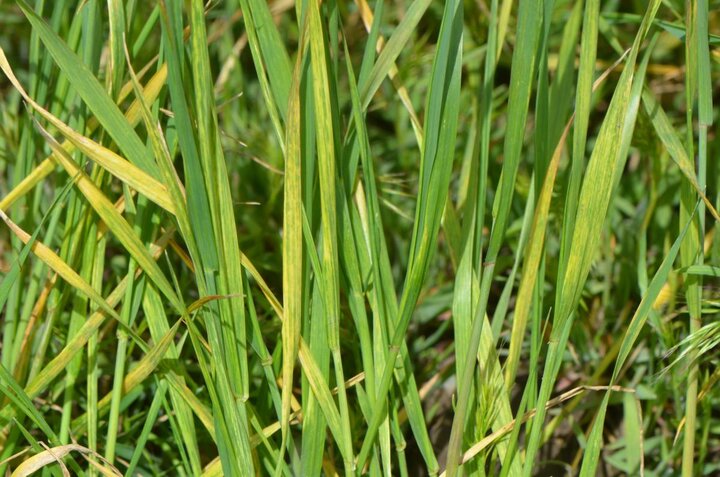
| Leaf rust | Stem rust | Stripe rust | |
|---|---|---|---|

|
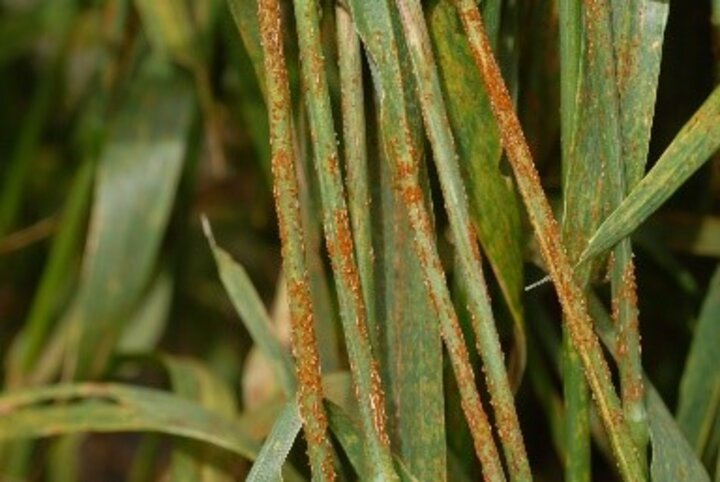
|
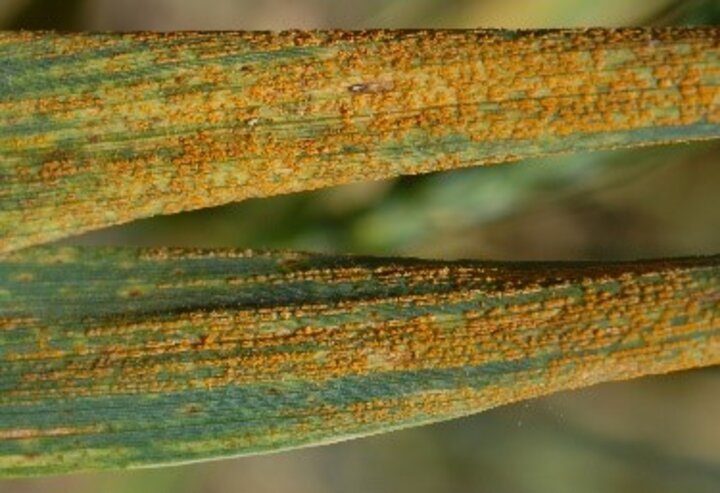
|
|
| Pustule location | Leaf, mainly on the upper surface | Stem and leaf, upper and lower surfaces of leaf; occasionally on head | Leaf, upper surface; occasionally on head and seeds |
| Pustule color | Orange-brown | Orange-red to dark-red | Orange-yellow |
| Pustule arrangement | Single and random | Single and random | Stripes |
| Pustule shape and size | Round or slightly elongated; small to medium | Oval shaped or elongated; small to large | Round, blister-like; small |
| Tearing of host epidermis | Rare, visible with magnification | Conspicuous | None |
| Optimum temperature for infection | 59-68°F | 59-84°F | 45-54°F |
| Optimum temperature for disease development | 68-77°F | 79-86°F | 50-59°F |
| Alternate hosts | Meadow rue (Thalictrum sp.); does not play a role in the leaf rust life cycle in the United States | Barberry (Berberis sp.); where present, can play a role in the stem rust life cycle in the United States | Barberry (Berberis sp.); where present, can play a role in the stripe rust life cycle in the United States |
